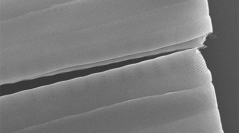

 Cryptogamie, Algologie
41 (6) - Pages 37-45
Cryptogamie, Algologie
41 (6) - Pages 37-45Diatoms from the extreme cold habitats in northern areas of East Siberia are still poorly studied. Ecological significance of the lakes of the Pole of Cold of the Northern Hemisphere consists in their pristine environment characterized by special environmental factors, such as the long ice cover period, low temperatures, short vegetative period, low photosynthetically active radiation, deficiency of nutrients. Such water systems can thus be used as sensitive indicators of environmental changes. The diatom Ulnaria ulna (Nitzsch) Compère from the genus Ulnaria (Kützing) Compère is widespread in fresh and brackish waters of the world, both in plankton and in benthos, which raises questions about the actual distribution of this species and the presence of cryptic species hidden under this name. In this study, monoclonal cultures of Ulnaria were isolated from epilithic microphytobenthos collected in Lake Labynkyr, located in the northern Pole of Cold region in the Sakha Republic (Yakutia), and were investigated in detail by light and scanning electron microscopy and phylogenetic analysis of the rbcL gene fragments. Cells in culture were able to attach to the substrate with mucilage strands secreted through the pore fields of both valves at one end of the cell. The results of the morphometric and phylogenetic analyses enabled to identify the isolated clones as Ulnaria pilum Kulikovskiy & Lange-Bertalot and showed that species morhoplogical variability is larger than originally described.
Lake Labynkyr, diatoms, Ulnaria, rbcL, morphology, phylogeny, Alcian blue staining